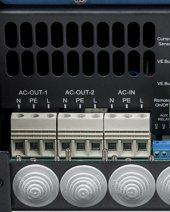Hi everyone,
I am sure it’s just temporary, but it seems like most vendors in Europe are running out of stock of the Multiplus II 48/5000 hybrid inverter. Hard to find good offers and the cheaper vendors only has the GX version.
Meanwhile I’ve seen some really good offers for the 48/3000 version. As it is right now, I can basically get 2 x 48/3000 for a price that is just 70 USD more than 1 x 48/5000.
As I understand the Multiplus is “stackable”. But I am having a hard time understanding how that actually works. What do you guys think, is two stacked 48/3000 much better than one 48/5000? What are the pros and cons?
To get a three phase system (480v AC), I would need three stacked right?
I am sure it’s just temporary, but it seems like most vendors in Europe are running out of stock of the Multiplus II 48/5000 hybrid inverter. Hard to find good offers and the cheaper vendors only has the GX version.
Meanwhile I’ve seen some really good offers for the 48/3000 version. As it is right now, I can basically get 2 x 48/3000 for a price that is just 70 USD more than 1 x 48/5000.
As I understand the Multiplus is “stackable”. But I am having a hard time understanding how that actually works. What do you guys think, is two stacked 48/3000 much better than one 48/5000? What are the pros and cons?
To get a three phase system (480v AC), I would need three stacked right?



